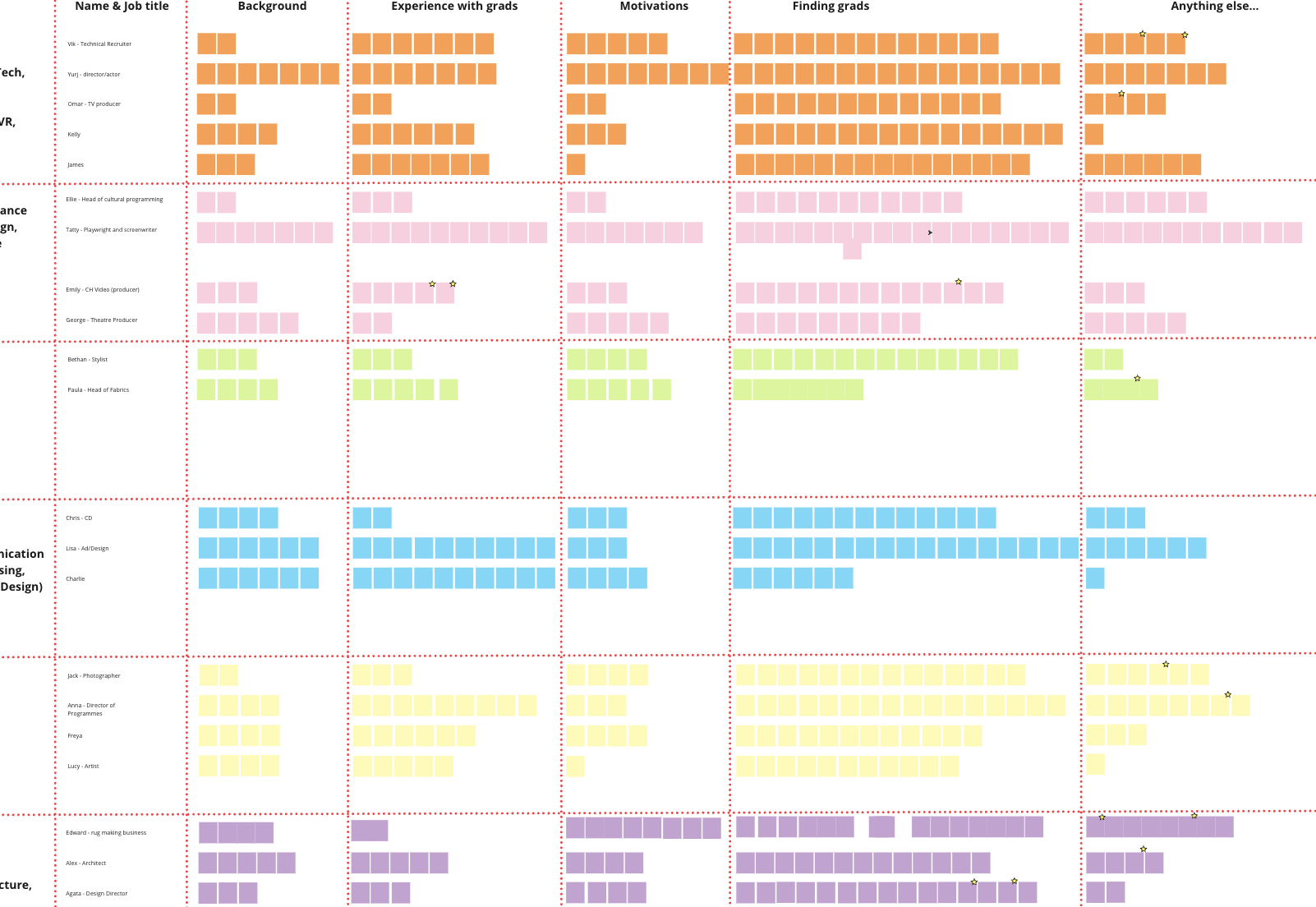UX and Design
Designers predict the biggest UX trends for 2024
30 January 2024 • 7 min read

It's the most wonderful time of the year (if you love new year planning like we do!). A clean slate, fresh opportunities ahead, and nothing to dull your enthusiasm but fitting those big ambitions into your budget.
When it comes to good design, the return on your investment is clear. Great UX = better conversion rates, more engaged customers and a better brand perception, meaning customers keep coming back. What's less clear is where to invest when it comes to design. Following trends keeps things fresh and exciting for your customers, but even the best-funded team can't afford to hop on a new fad every other month.
To help you get ahead and use your design budget efficiently this year, four of our top designers are sharing the biggest priorities they see for 2024.
Trend 1: A step-change in digital accessibility
What a difference a year makes. Or does it?
The global design community loves an annual trend prediction. 2023 kicked off with visions of sustainable, AI-powered and bright UX, and now a year later we're actually still in a similar place. This is less surprising than you'd think; design trends that capture global attention tend to endure for a few years before gaining popularity, and often take even longer to fade.
However, one noticeable change over the past 12 months has been the rapid rise of GenAI imagery, and the ease with which we can now create it. We've become accustomed to vibrant, bold renders and full-bleed mesh gradients that can greet like a digital punch in the face. And you’d be forgiven for thinking digital product design is heading in that direction too, but that’s not the case. One significant reason for this is the increasing focus on accessibility.
While accessibility in digital design has been a concern for decades, there has been a recent notable shift. Instead of playing catch up, organisations are proactively working to get ahead, aided by a proliferation of tools for easier and more confident execution. A big part of this push comes down to the European Accessibility Act (EAA), which dictates that even private firms involved with e-commerce must now meet WCAG standards by 2025. Businesses now have to consider both the legal and optical implications of non-compliance, and we’ll be seeing more and more interest in accessibility as this deadline tightens. While post-Brexit UK is not obliged to adhere to the EEA, it would be short sighted for business not to consider the ~20% (according to the 2021 census) of our population living with some form of disability. Or to forget that our population is an ageing one, where accessibility needs, particularly when it comes to challenges such as fading eyesight and poorer dexterity, are par for the course.
While it's easy to equate the term 'trend' with 'fad,' the former identifies a general direction of change. And the significance of accessible design, as we now better understand and appreciate it, is finally here to stay.
Design Principal AND Animator
Trend 2: Re-re-focusing on the user
Research by IBM and NASA revealed that every $1 invested in UX could result in a return up to $250. McKinsey studied 2 million pieces of financial data and 100,000 design actions over five years. Conclusion: Design-led companies had 32% more revenue and 56% higher total returns to shareholders compared with other companies.
In 2023, we directed our clients towards strategic insights to inform product decisions and, increasingly, we’re seeing more openness to proper discovery phases in our work. I believe that human-centred, data informed experiences deliver the best results for both business and customers. Simply put, when we design to meet human needs, we can also positively impact business goals. And, anecdotally, we’re seeing more appreciation of, and buy-in for this.

Note-taking from a user research session
We’re also seeing improved access to individuals with the specific needs we’re trying to design for, allowing us to put our user-centred designs to the ultimate test. Observing our products with their intended audience has been enlightening, and has allowed us to learn from the times that we’ve actually missed the mark. Reducing friction for groups with specific needs not only enhances experiences for a broader audience, but also raises awareness within organisations about the positive impact for their businesses.
During the pandemic, we saw interesting shifts - people moving online out of necessity, and businesses reaping the fruits of this shift. Some were smart and saw this as an opportunity to learn what those customers needed and to design accordingly. However, as the world opened back up, and peoples’ choice widened, many businesses saw steeply declining online sales. To compete in today’s landscape, where consumers have so much choice, both on- and offline, businesses have to be user-centric to thrive. It simply isn’t good enough to have disconnected on- and offline experiences. To have slow delivery. To lack clear information online. Think about the products and services you use time and time again. And why you stick with them (or don’t!)
We, as people building products and services can support by continuing to advocate for users. But also by continuously demonstrating the value in centering the user.
UX Principal AND Sneaker Queen
Trend 3: Designing for sustainability
As designers, we wield a direct influence on the size, structure, and user experience of the internet, impacting its estimated 5.4 billion users. This vast global network consumes about 7% of global electricity, with digital technologies, particularly the internet, contributing to 4% of global emission figures. While individual actions like reading an article, responding to an email, or conducting a search may seem insignificant, their cumulative effect at scale results in staggering energy consumption.
The good news is that we can use design best practices to curtail the energy footprint of our work and consequently reduce emissions. This is not only important for designers but also for organisations aiming to demonstrate environmental responsibility and meet ESG targets. I anticipate a growing trend towards sustainable design practices that align with ongoing technological initiatives, such as the adoption of eco-friendly hosting options.
A notable example of a global brand at the forefront of this movement is Unilever. Unilever are on a mission to reduce the carbon footprint of their websites. They’re doing this by employing a combination of technological enhancements and refined design practices, including reducing the energy load of images and enabling an energy-saving 'dark mode' that can decrease screen energy consumption by up to 42% on OLED screens.
In addition, I anticipate that brands will actively seek accreditation for their green design practices from organisations like The Green Web Foundation. This shift may also involve a commitment to measuring and openly publishing their website carbon scores.
Understand the carbon impact of your digital design
Watch out for design practices such as:
- Optimising font usage by employing fewer fonts.
- Embracing minimalistic design trends to reduce clutter and enhance load speeds.
- Considering the environmental impact of large content volumes.
- Actively reducing and optimising video content.
- Transitioning towards low-impact graphics, animations, and images
- Re-use of design components and continued focus on design systems
- Designing for accessibility, which can align with wider sustainability goals
For brands, adopting more ethical practices is business-savvy as consumers look to make more ethical choices. As designers, we’re in the privileged position to support brands to be more sustainable and to adopt these practices into our work.
Experience Principal AND Outdoor Lover
Trend 4. The gap between design and code will shrink even further
Since ChatGPT exploded onto the scene, there have been relentless claims about the impact generative AI will have on tech jobs. Unlike many, I'm an optimist about this: I think the hardest challenge UX designers have is understanding end users and communicating effectively, and I don't think fanciful generations of interfaces will be able to help there.
Pretty but unusable interface designs, generated by Midjourney
I do think, however, that the powers of GenAI will make our jobs easier, specifically by reducing the gap between design and code.
We've already seen this trend materialise across many new and existing design tools. Framer used to be one of a cluster of prototyping tools; but last year they pivoted to a design app that allows you to publish a fully functional website with one click. Rive is a tool for creating interactive animations that work anywhere, without any developer implementation required. And I personally have been experimenting with FlutterFlow recently, which is a visual no-code app creator that allows for creating cross-platform Flutter apps, complete with Firebase cloud storage, custom authentication and API calls.
Industry leader Figma is clearly moving in this direction, too. Last year at their annual conference, Config, their two main feature releases were a suite of new AI tools and a mode for developers to allow them to easily move designs over into code.
Time will tell if designers can make use of these new tools and paradigms, but I think it all aims to give designers more skin in the game, and we’d be fools not to jump right in.
Senior Designer AND Plant Lover
Great design has the power to not only create immersive, intuitive experiences; it can improve the daily lives of our users and reduce our collective impact on the planet. If you’re looking to make a remarkable impact this year, learn how our design team can help (plus see their expertise in action!).



